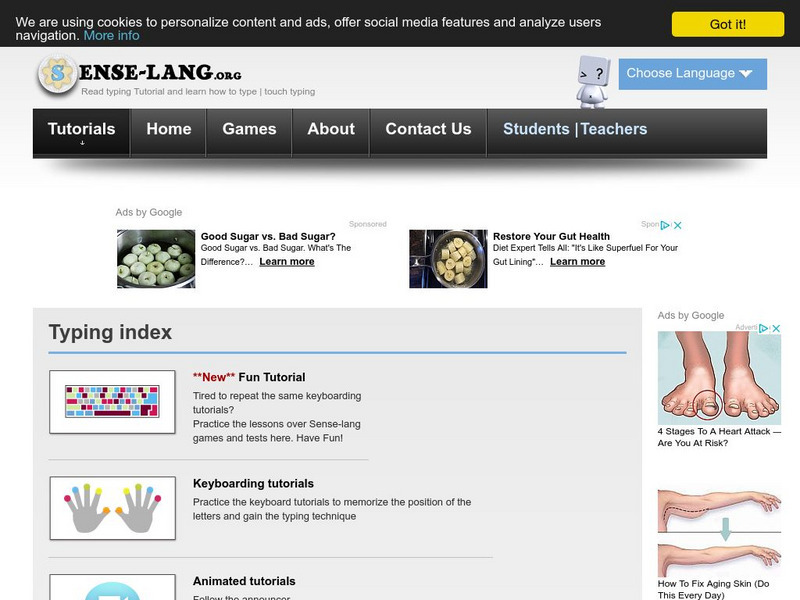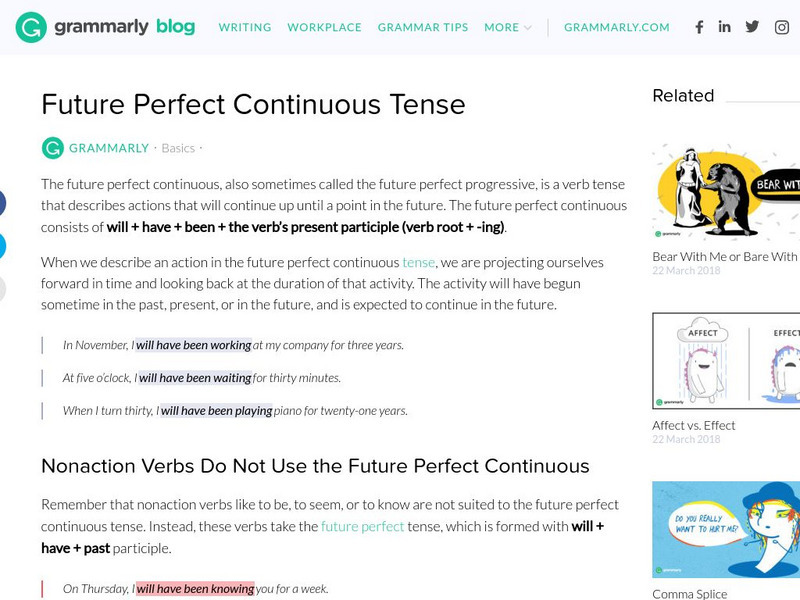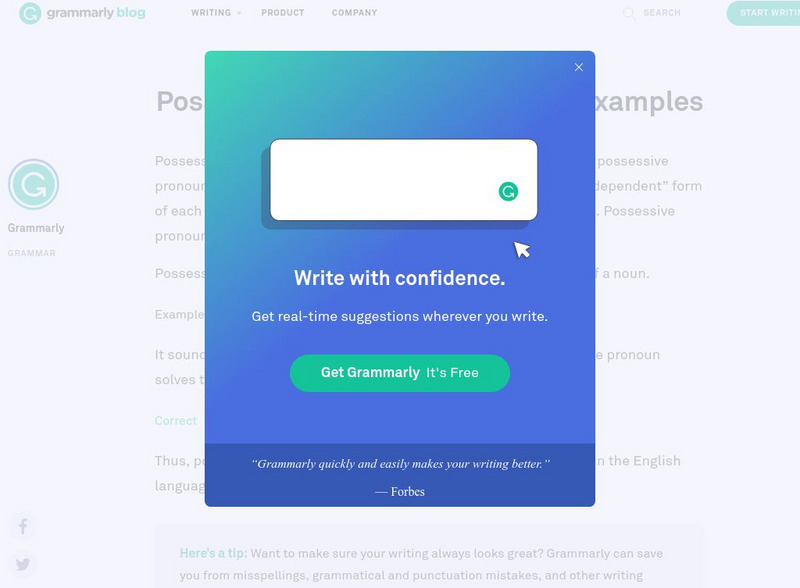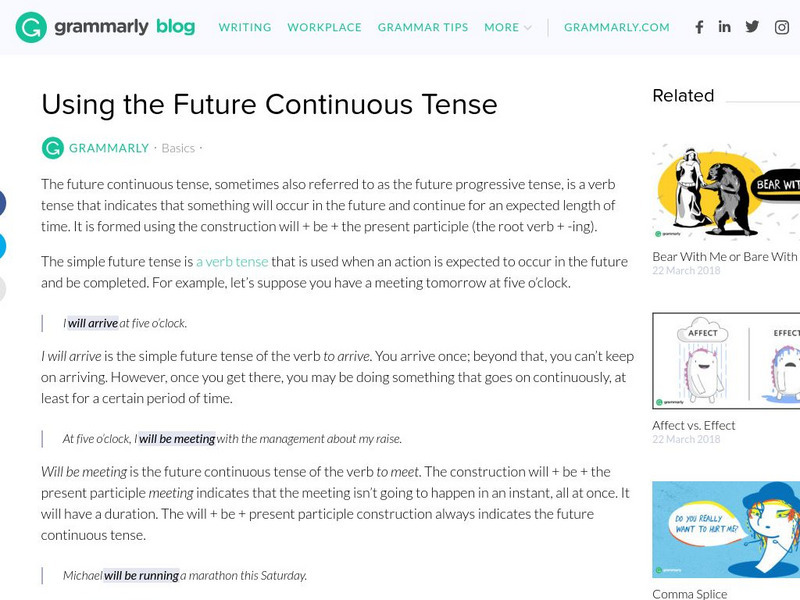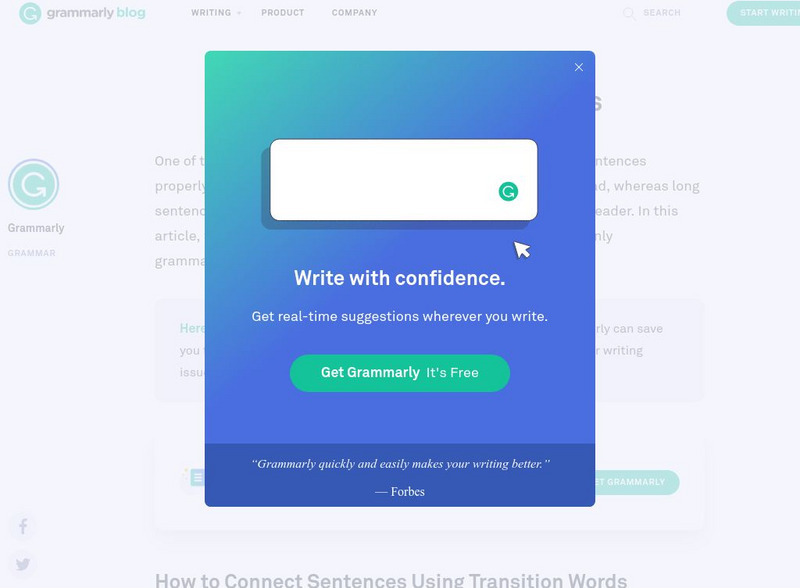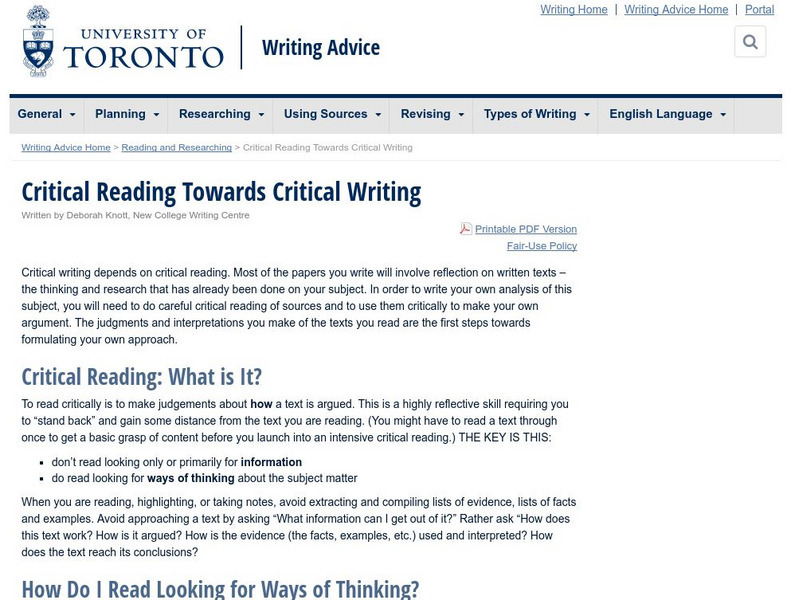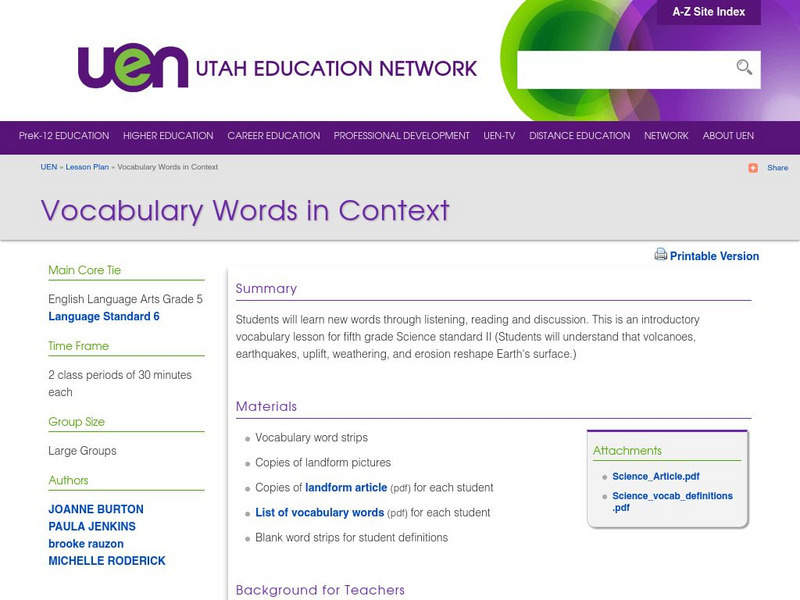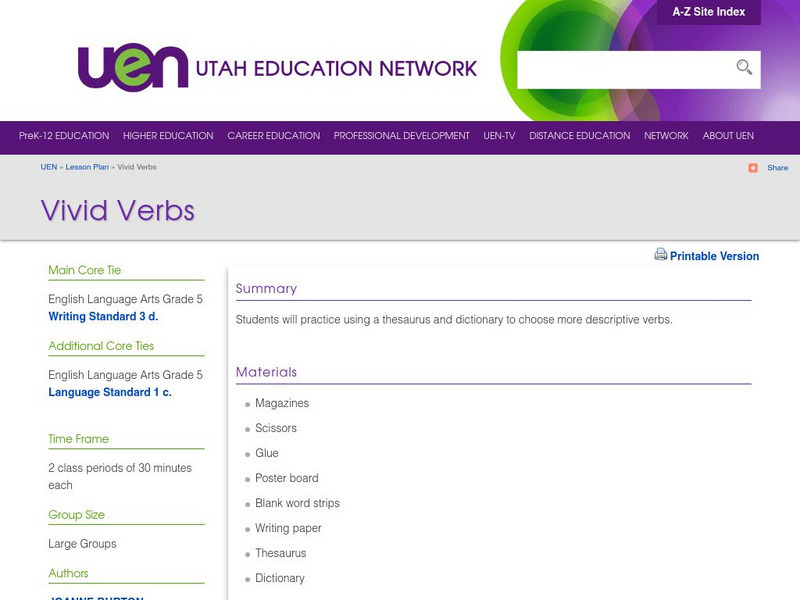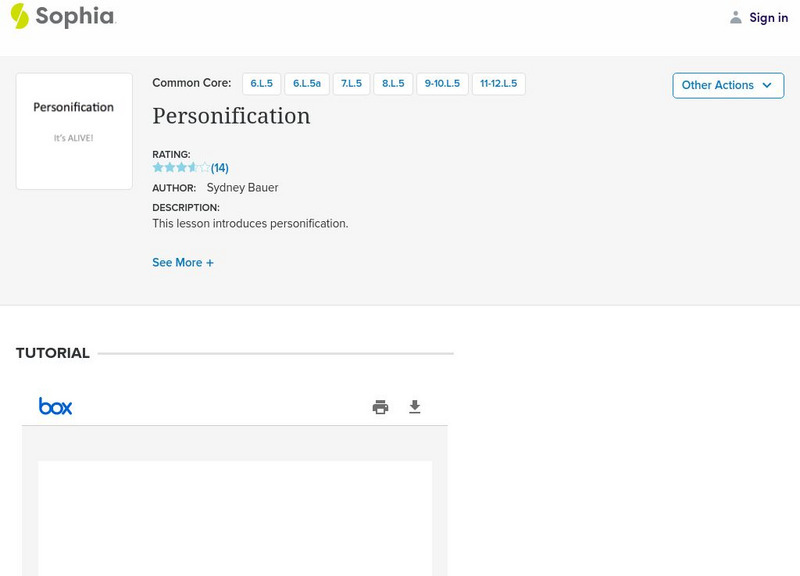Caro Clarke
A, B, and C Characters
This is the ninth article in a series that focuses on helping the new novel author. This article focuses on what the author calls "A, B, and C Characters," used to describe the different levels of characters.
Other
Sense Lang: Free Touch Typing Program
Learn how to type correctly or test your typing skills with this free tutorial.
Grammarly
Grammarly Blog: Future Perfect Continuous (Progressive) Tense
This page explains what future perfect continuous (progressive) tense means and how it is formed; examples are provided.
Grammarly
Grammarly Blog: Possessive Pronouns: Rules and Examples
An explanation with examples of possessive pronouns and how they are used in sentences.
Grammarly
Grammarly Blog: Using the Future Continuous Tense
This page explains what future continuous (progressive) tense means and how it is formed and provides examples.
Grammarly
Grammarly Blog: Connecting Sentences
This Grammarly Handbook resource provides ways to connect sentences using transition words and punctuation (colons and semi-colons). Includes a list of transitional words and their uses, and a discussion of how punctuation is used to...
Other
Thoughtful Learning: Minilesson: Asking and Answering the 5 W's and H Questions
Students will learn the "5 W's and H questions" needed to comprehend a news story. Then students will apply these question words [who, what, where, why, when, and how] to real news stories and to events in their own lives.
University of Toronto (Canada)
University of Toronto: Critical Reading Towards Critical Writing
Aimed particularly towards writing about non-fiction, this site describes ways to think about what you read so you can write more clearly. Focuses on analyzing the "ways of thinking" that an author uses so you can evaluate the validity...
ClassFlow
Class Flow: Context Clues Intro
[Free Registration/Login Required] This flipchart discusses context clues and how they are used to determine the meaning of unfamiliar words. There is sufficient material for several lessons on this topic. Included are activities and...
Read Works
Read Works: Aztecs, Incas, and Mayans the Aztec Empire
[Free Registration/Login Required] This nonfiction passage provides information about the ancient Aztec Empire, including the significance of Montezuma and Tenochtitlan. This passage reinforces essential reading comprehension skills....
ClassFlow
Class Flow: Figurative Language Review
[Free Registration/Login Required] This lesson helps students understand figurative language.
Annenberg Foundation
Annenberg Learner: Workshop 2: Making Writing Meaningful
Workshop 2 demonstrates how teachers use authentic sources and topics to prompt students to write about things that matter to them, subjects that relate to their lives, relationships, and communities. The topic may be the students -...
English Club
English Club: Learn English: Grammar: Verbs: Tense: English Tense System
Information about verb tenses with links to additional information: Tense and Time, Basic Tenses, Regular Verbs, Irregular Verbs, and Be.
Grammarly
Grammarly Blog: Dashes
This page focuses on the rules for the use of dashes. Explains what a dash is, what it does, and the three formats of dashes (em, en, and the double hyphen). Examples are provided with the "dash" used in different contexts.
Utah Education Network
Uen: Vocabulary Words in Context
In this lesson, 5th graders will use context clues as they learn new science vocabulary words through listening, reading and discussing the new content. The terms are associated with the reshaping of the earth's surface.
Utah Education Network
Uen: Vivid Verbs W.5.3.d
This activity engages students in analyzing word choices. Students will write descriptive paragraphs about interesting magazine pictures and ensure that they are using vivid words in their writings.
Utah Education Network
Uen: Greek and Latin Roots Introduction
During this mini-unit, students will learn common Greek and Latin roots. Several supplementary resources are provided for students' study beyond the lessons.
Utah Education Network
Uen: Picture This: Visualization
Students will practice the reading comprehension skill of visualizing. Teachers will model the skill with All the Places to Love by Patricia MacLachlan. Then students will listen to Robert Service's poem "The Shooting of Dan McGrew" and...
Other
Indiana University of Pennsylvania: Writing Center: Shifty Tenses
Notes about verb tense, when it should and should not be changed, and what tense is best to use when writing about literature.
Other
Indiana University of Pennsylvania: Writing Center: Using Transitions
This Indiana University of Pennsylvania Writing Center resource provides tips to ensure organizational flow content.
Sophia Learning
Sophia: Comparing and Contrasting Texts
Two PowerPoint presentations and a video [2:57] on comparing and contrasting literary and informational texts as well as how to write a literary analysis. Includes links to external resources.
Sophia Learning
Sophia: Evaluating the Connotation
This lesson focuses on evaluating the connotation of a vocabulary word. It defines connotation and gives an example. It details three steps: read the word in context, determine the tone of the overall reading, and compare the tone with...
Sophia Learning
Sophia: Paper Writing: Transitions and Topic Sentences
This tutorial focuses on transitions including transitional devices, lists of common transition words and phrases, transitions between paragraphs with examples, and separate lists of transition words for descriptive, narrative, and...
Sophia Learning
Sophia: Personification
Seven slides introducing and providing examples of personification. Slides also explain the purpose and impact of personification within a text, and examples come from "Rappaccini's Daughter" by Nathaniel Hawthorne.

